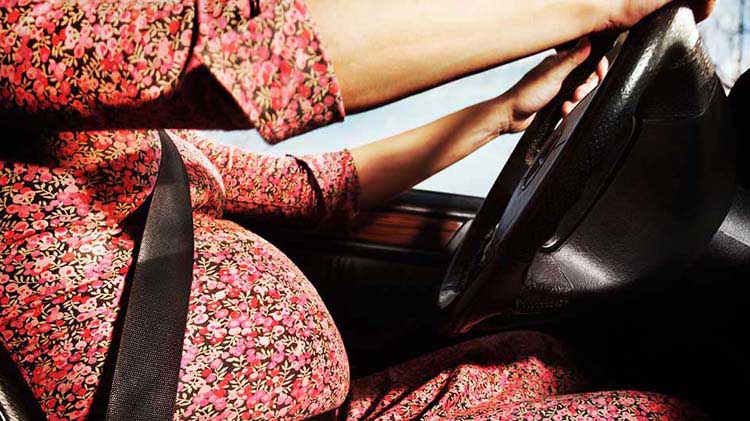Safety tips for driving while pregnant
Seat belt adjustments and more safety tips to consider when driving while pregnant.
When you’re expecting a child, you might be busy with to-do lists to help prepare for your baby. Don’t forget to include safe driving adjustments that may be needed.
Tips for use of seat belt while pregnant
Help protect yourself and your precious passenger by wearing your seat belt correctly. Here's how:
- Travel in vehicles equipped with three-point restraints. This system consists of a lap and shoulder belt.
- Place the shoulder belt between your breasts and to the side of your belly. The belt should fall across the center of your shoulder and chest, away from your neck.
- Do not wear the shoulder belt under your arm or behind your back.
- Secure the lap belt under your belly so it sits low on your hips.
- Never let the lap belt lie across or above your stomach.
- Adjust the belt's fit so it's snug but comfortable. If you travel during cold weather, warm up your vehicle before you get in so you can shed a heavy coat that might cause the belt to not fit properly.
Additional precautions to take while driving pregnant
Wearing your seat belt properly is just one safety measure to take in the car. Also keep these pointers in mind:
- If you feel extra tired, nauseated or dizzy, don't drive. If these symptoms come on suddenly, pull over safely and rest, or walk around a bit until you feel better.
- According to the National Highway Traffic Safety Administration, don't disable your air bags, as seat belts and air bags provide more protection than seat belts alone. In addition, the American College of Obstetricians and Gynecologists recommends to keep a distance of at least 10 inches between the steering wheel and your breastbone. It might be challenging to keep the distance later in pregnancy, but if your car has a tilt steering wheel, try to angle it towards your breastbone instead of your growing belly.
- Try to avoid sharp, fast turns and sudden braking while driving.
- If your belly grows too large to allow you to turn comfortably, reach the pedals or otherwise drive safely, catch a ride with others until after the baby is born.
- When you aren't driving, sit in the back seat for further protection.
- If you are driving long distance while pregnant, consider taking water and snacks for the road. Frequent stops may help you stretch and stay alert.
- Avoid driving distractions like using your phone or changing the music. Remember to be focused on the road and be extra careful if you must drive during bad weather.
- If you are involved in a car accident, see your doctor right away to get checked over — even if you feel fine.
- It might be redundant to mention it, but do not drive when you are having contractions or in labor. Contractions can change intensity very quickly and driving may put you, your baby and others at risk. Consider calling an ambulance in the case of an emergency.
As you prepare for your baby, you may be interested in how to properly install a car seat or how to choose a safe baby crib. And since your family needs may be changing with the baby’s arrival, consider talking to a State Farm® agent about different life insurance products that may fit your growing family.




